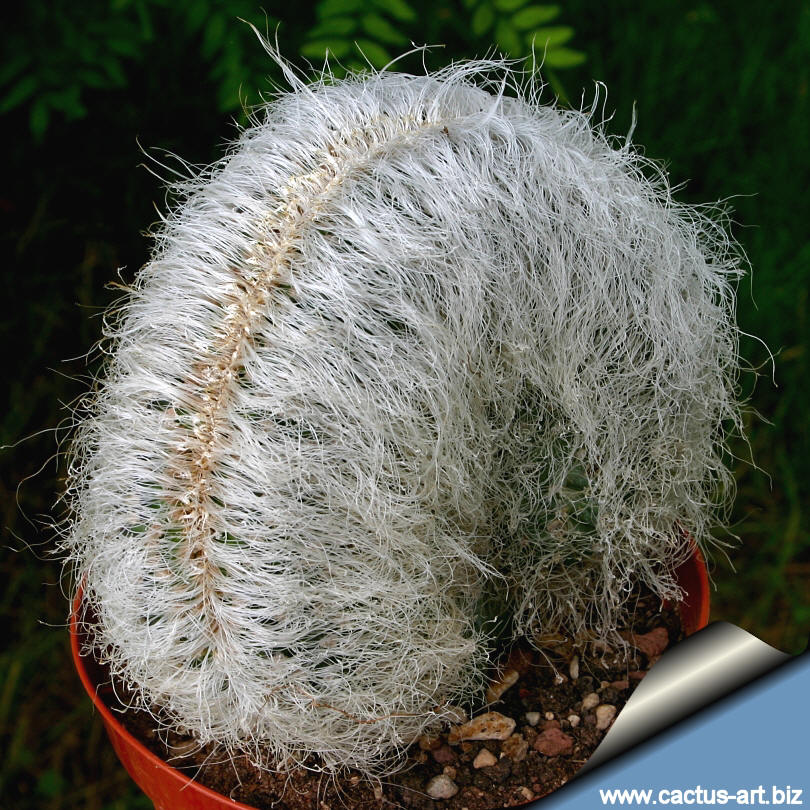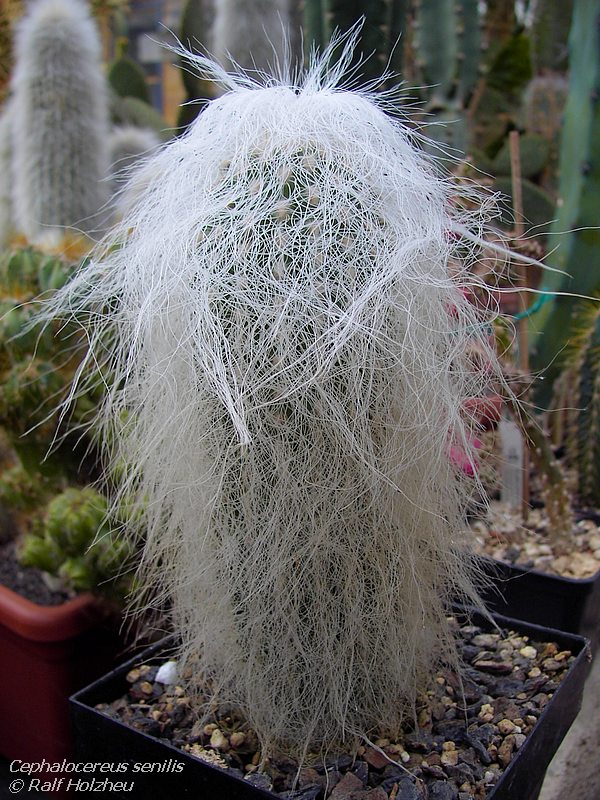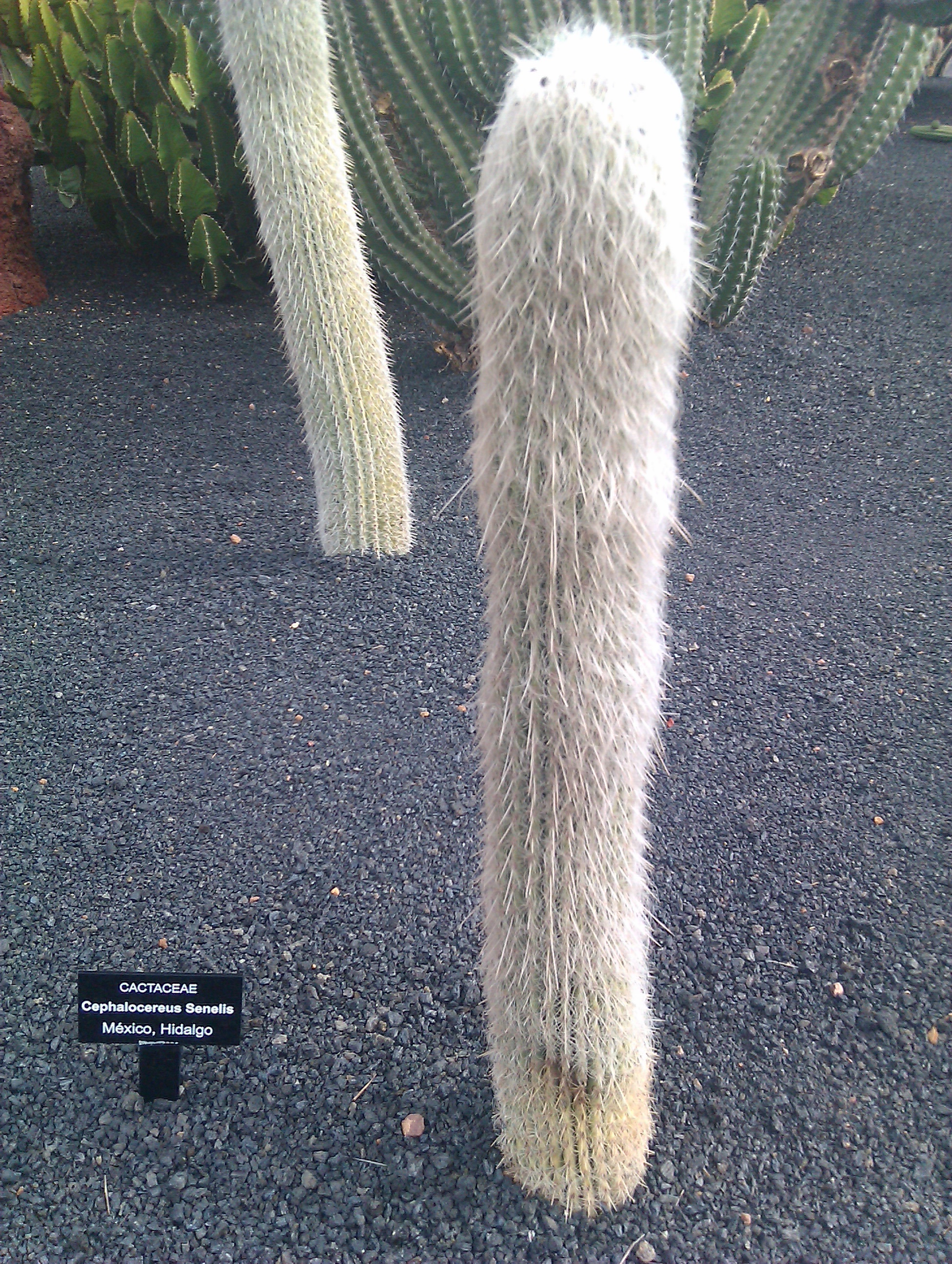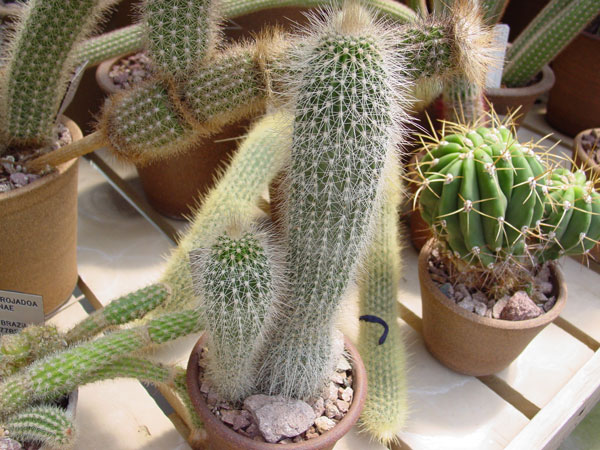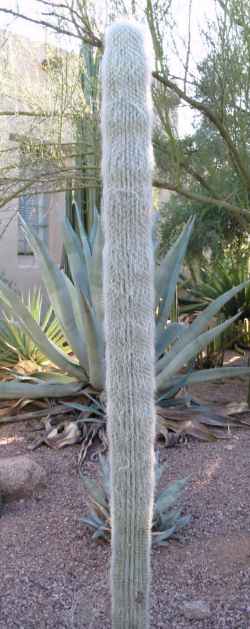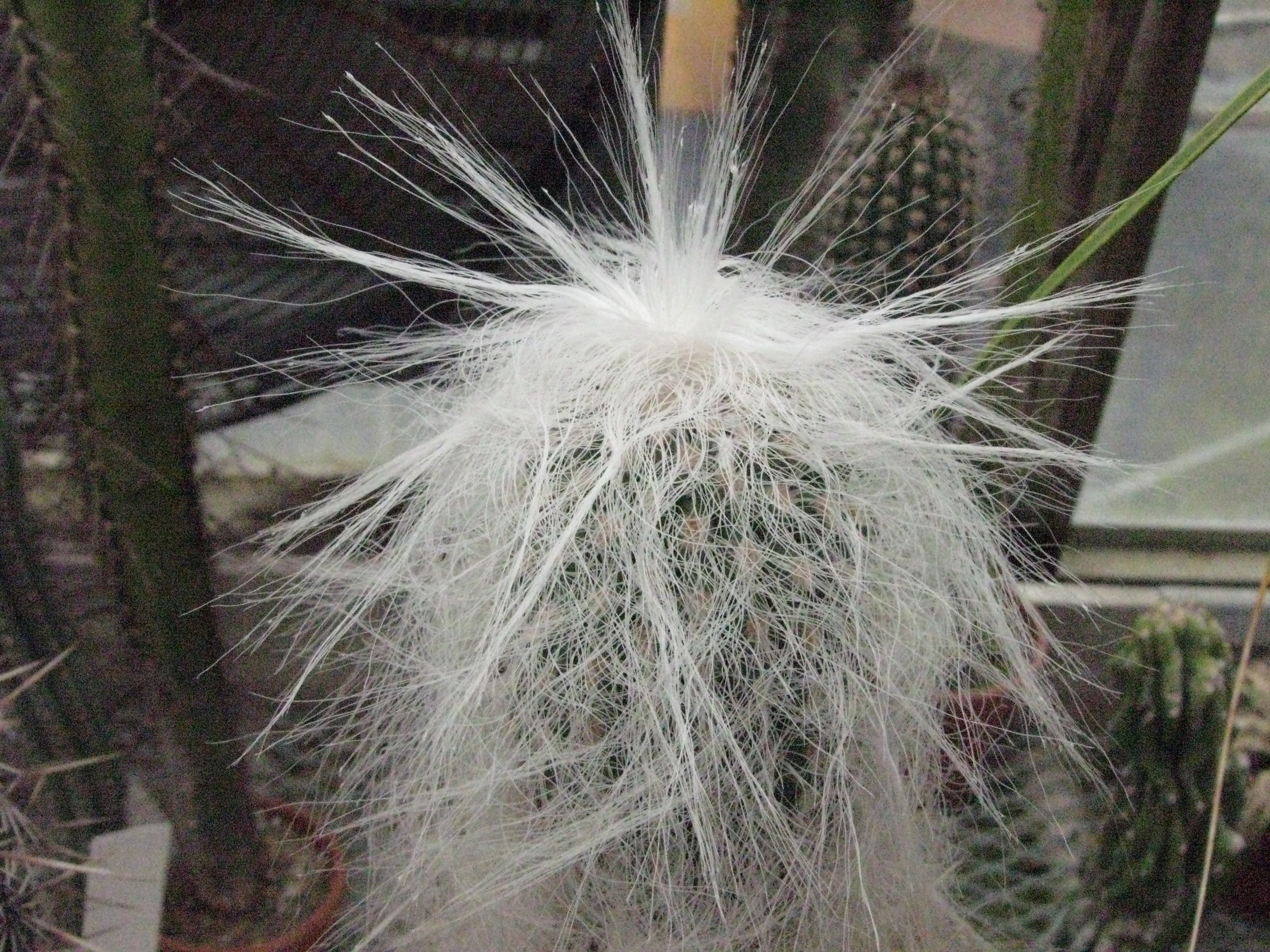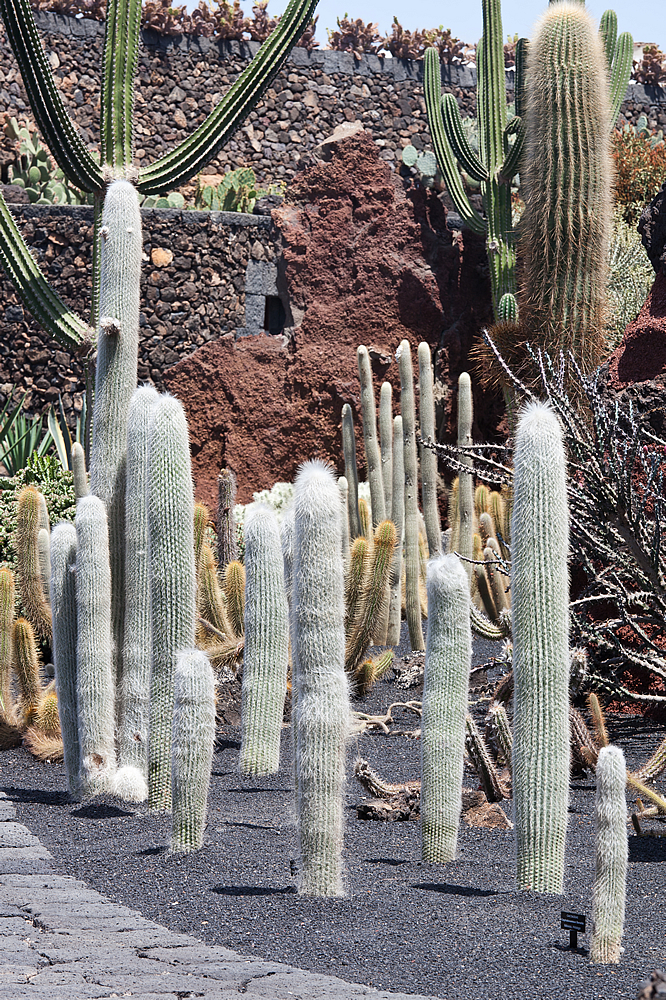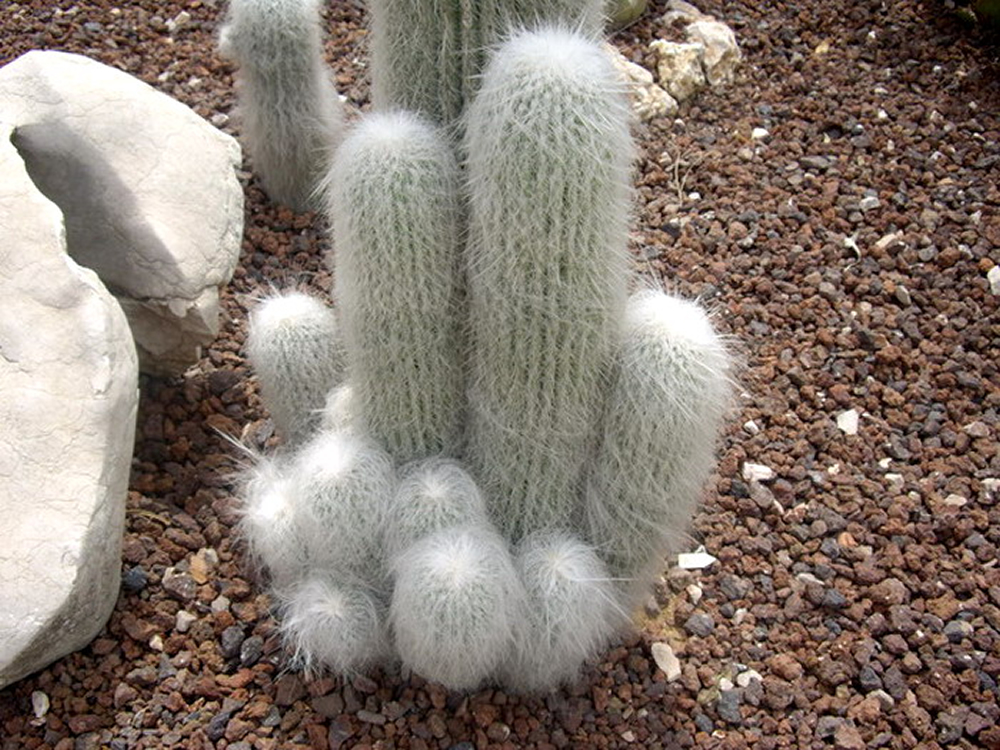Cephalocereus
Cephalocereus is a genus of flowering plants of the cactus family ( Cactaceae ). The botanical name of the genus derives from the Greek noun " κεφαλή " ( chephale ) for head and means capitate Cereus.
Description
The columnar and upright growing species of the genus Cephalocereus are branched or unbranched and reach stature heights of 10 to 12 feet. The light green, gray with age, shoots have a diameter of up to 40 centimeters and are near the top almost completely covered by dense thorns. In the 12 to 30 (or more) vertical ribs sit at a close distance dimorphic areoles. The central spines to 5 are yellowish to gray and up to 4 inches long. The numerous, bristly or hair-like spines cases usually the engine tight one.
The medium size, tube- to bell-shaped flowers emerge from a Pseudocephalium and open at night. The flower cup and the flower tube are covered with small scales.
The egg-shaped fruits have small scales are woolly and have a perennial flower rest. The smooth, pear- shaped seeds are black.
Systematics and distribution
The species of the genus Cephalocereus are common in southern Mexico in the states of Puebla, Oaxaca, Hidalgo and Guanajuato, where they often form dense forests.
The first description of the genus was made in 1838 by Ludwig Georg Karl Pfeiffer. The type species of the genus Cactus senilis. Belong to the genus of the following types:
- Cephalocereus apicicephalium
- Cephalocereus columna - Trajani
- Cephalocereus nizandensis
- Cephalocereus senilis
- Cephalocereus totolapensis
Synonyms of the genus are Cephalophorus Lem. , Haseltonia Backeb. and Neodawsonia Backeb.


